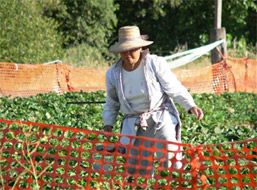 Heat Illness Prevention
Heat Illness Prevention 
Work Clothing and Personal Protective Equipment (PPE) Elements of Your Written Program and Effective Work Practices
What is in T8CCR 3395?
T8CCR 3395(b) Definitions states the following:
“Environmental risk factors for heat illness” means working conditions that create the possibility that heat illness could occur, including air temperature, relative humidity, radiant heat from the sun and other sources, conductive heat sources such as the ground, air movement, workload severity and duration, protective clothing and personal protective equipment worn by employees.
T8CCR 3395(h) Training states the following:
(1) Employee training. Effective training in the following topics shall be provided to each supervisory and non-supervisory employee before the employee begins work that should reasonably be anticipated to result in exposure to the risk of heat illness:
(A) The environmental and personal risk factors for heat illness, as well as the added burden of heat load on the body caused by exertion, clothing, and personal protective equipment.
Guidance, Best Practices and Warnings
Inappropriate work clothing and Personal Protective Equipment can increase the burden of heat load on the body caused by exertion and increase the risk of developing Heat Illness. Employers need to train employees on how such clothing and Personal Protective Equipment can cause heat illness and on the appropriate clothing and Personal Protective Equipment for the particular job they will be performing.
Best Practices
- Appropriate work clothing for employees protects them against the sun
and other environmental risk factors and allows the body to cool helping to
prevent Heat Illness. In general appropriate work clothing should be:
- Lightweight , loose fitting and made of breathable fabric that allow airflow and air movement aiding in cooling the body.
- Light-colored that reflects the heat better than dark-colored clothes (which absorb heat).
- Shirts with long sleeves that cover the body and avoid sunburn. Sunburn
affects the body’s ability to cool itself and increases the loss of body
fluid.

- Also employees should wear a wide-brim hat with attached fabric to
provide shade to the head, neck, face and eyes

Note: Employees applying pesticides and wearing PPE must follow all applicable regulations including, but not limited to T3 CCR 6724(b)(9), 6738(g).

